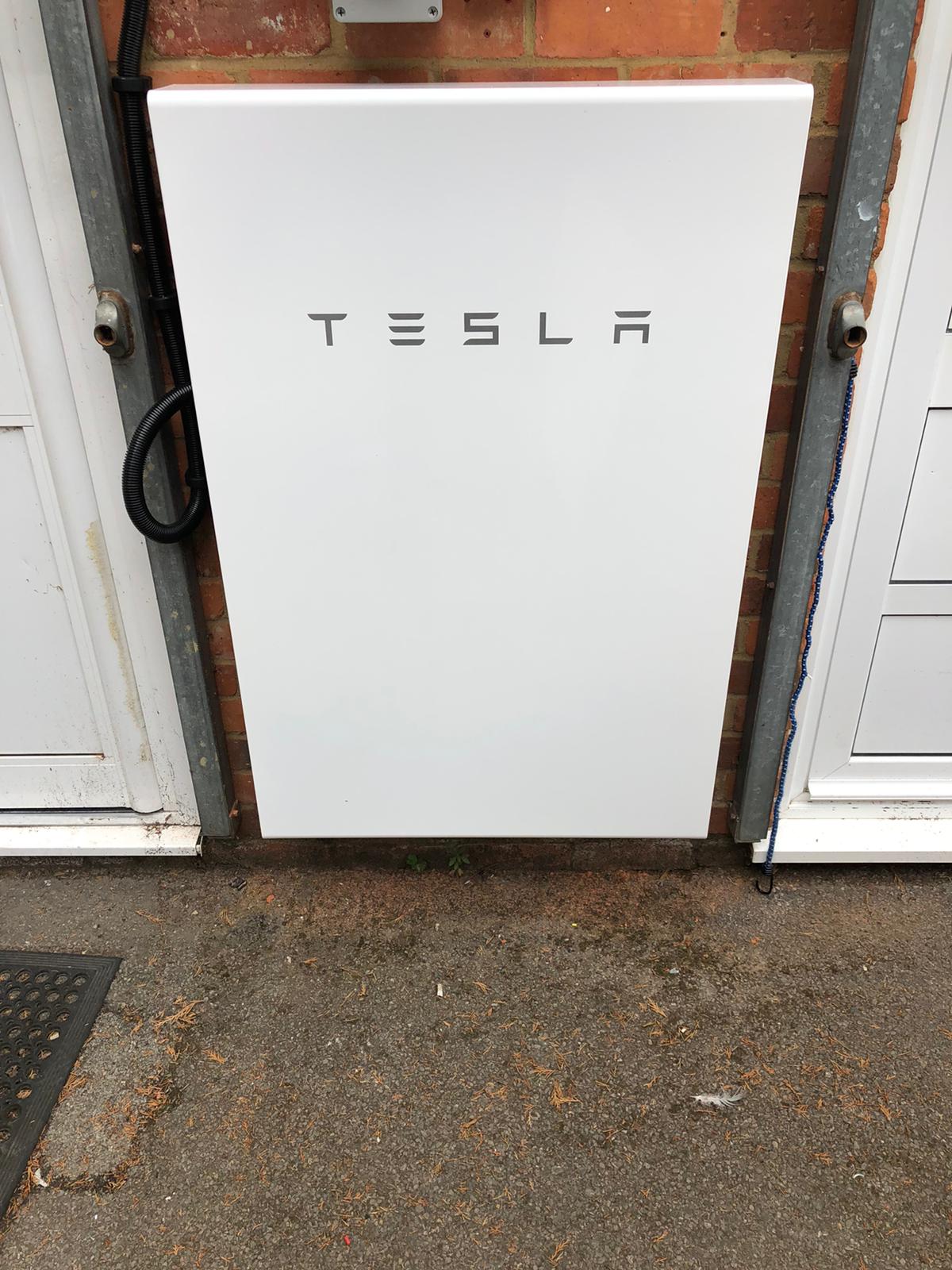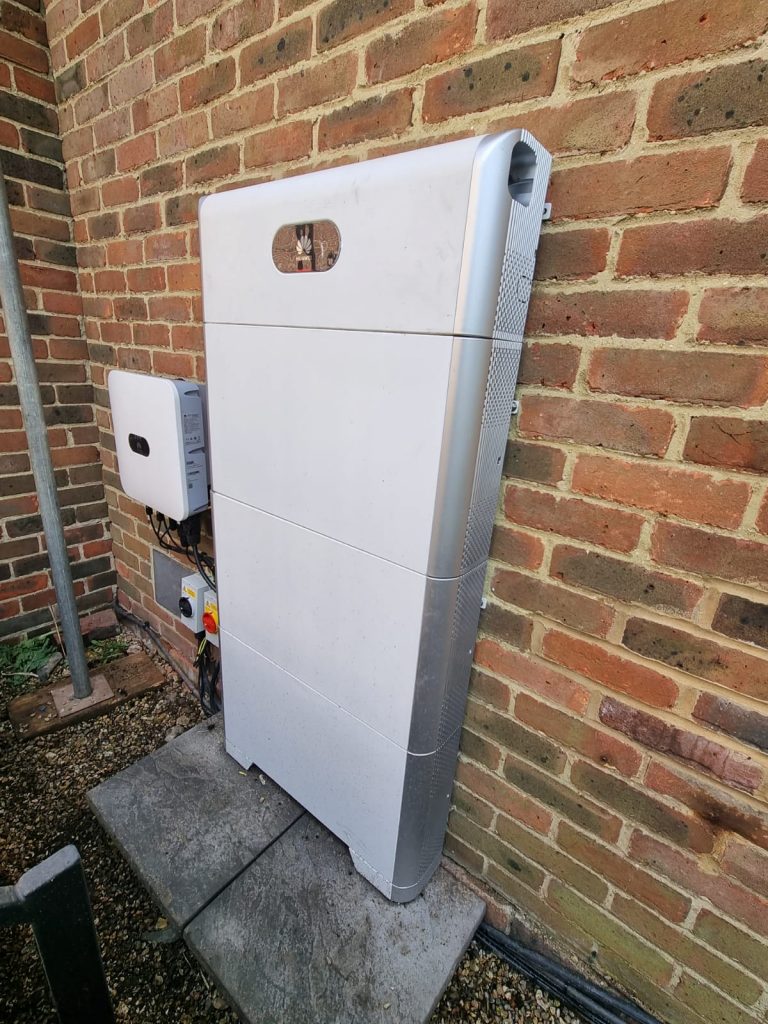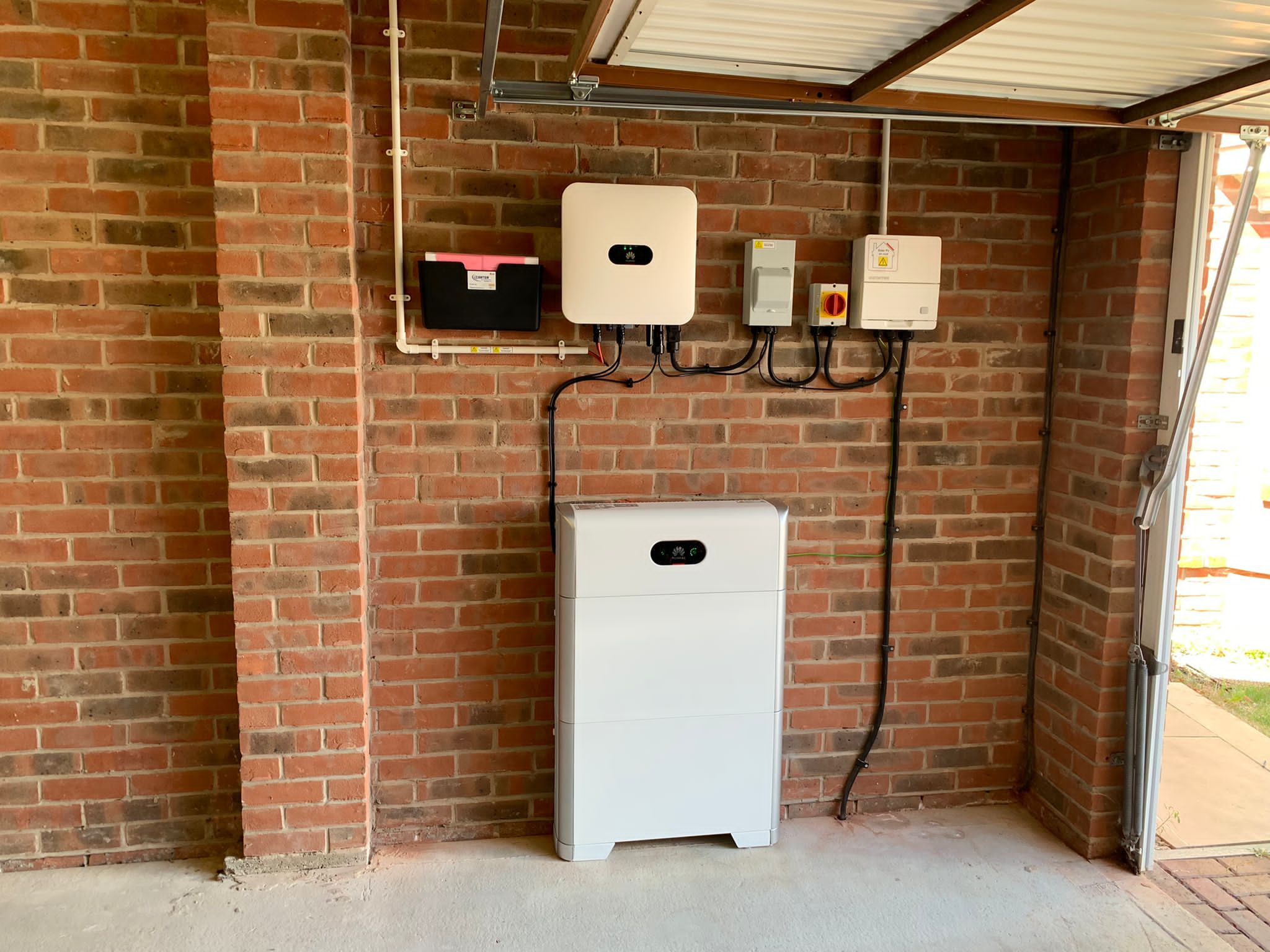Two of the most popular storage batteries available on the market are the Tesla Powerwall and Huawei Luna. We have installed both products so thought that a good idea for a Blog would be to compare and contrast their features. Storage batteries, alongside inverters, are becoming increasingly popular as domestic customers look to store the power created from their solar panels and then release the electricity when needed.
All batteries store DC (direct current) power, and solar panels produce DC power. But home appliances use AC (alternating current) power. This is where inverters and rectifiers come into play.
When solar panels produce DC power, it runs through an inverter, where it’s converted to AC, then flows through your house. If you have a backup power system, excess energy that’s not used in the home will keep flowing to charge your battery. It will need to run through a rectifier to be converted back to DC power in order to be stored in the battery.
Storage batteries have been in limited supply over the last two years due to many different issues. However we are beginning to see an improvement in the situation with Huawei becoming more available. Tesla batteries are still on a 12 month lead time but we do have some coming in soon.

The Powerwall
Our view of the key features:
*built in back up facilities
*great name and product
*good product for retrofit arrays eg. Solar already installed
Here’s a snapshot of key Tesla Powerwall specs:
- Energy Capacity 13.5 kWh
100% depth of discharge
90% round trip efficiency - Power 7kW peak / 5kW continuous
Quick backup transition
Pure sine wave output - Size and Weight L x W x D
45.3″ x 29.6″ x 5.75″
1150 mm x 753 mm x 147 mm
251.3 lbs / 114 kg
- InstallationFloor or wall mounted
Indoor or outdoor
Up to 10 Powerwalls
-4°F to 122°F / -20°C to 50°C
Water and dust resistance to IP67 - CertificationsMeets local safety standards and regulations
- Warranty10 years
Huawei LUNA2000 Battery key features
Huawei LUNA battery
Our view of the key features:
*Comes in smaller 5kw segments so easier to handle when Installing and capacity can be expanded with ease.
*High end product. 5kw max output power. Most other battery products, excluding Tesla, can only produce power up to 2/3.0kw
*DC coupled so no need for DNO application (general applications take 12 weeks)
*Good for new installs
- High Voltage Lithium (LFP) modules with 100% DOD
- 5kWh capacity per module scalable up to 30kWh
- Power output per module, 2.5kW continuous, 3.5kW peak
- AI-powered internal cell short circuit diagnosis to avoid fire hazards
- Cell-level temperature control to detect overheating
- Optimizer-enabled 0V rapid shutdown for safer installation and maintenance
- Internal heating system for better performance in extremely cold climates
- 10-year warranty
Modular battery system
The LUNA2000 batteries are made using lithium iron phosphate cells and can be stacked up to three high for a maximum of 15kWh of storage capacity per stack. However, the system can be expanded with a second stack offering up to 30kWh of total capacity with two stacks in parallel. Lithium Iron Phosphate (LFP) is widely known as one of the safest and most stable battery chemistries available for energy storage applications due to its wide operating temperature range and reduced risk of thermal runaway (overheating).
Compact, slimline design

The Luna2000 system is one of the most compact batteries available with a very small footprint thanks to the slimline design, which is quite appealing compared to some of the other more box-like batteries. The top section of the battery system is the power module, technically known as a BMU or battery monitoring unit, which is similar to other stackable battery systems controlled via a top-mounted BMU to provide the interconnection and communication to the inverter. The Huawei power module has inverter connections for flexible connection options on either side, while the main isolation switch and an inbuilt fuse are located on the right-hand side. The front led display features a round dial of ten LED lights to indicate the battery state of charge; this is a neat and unique way to indicate the state of charge.

